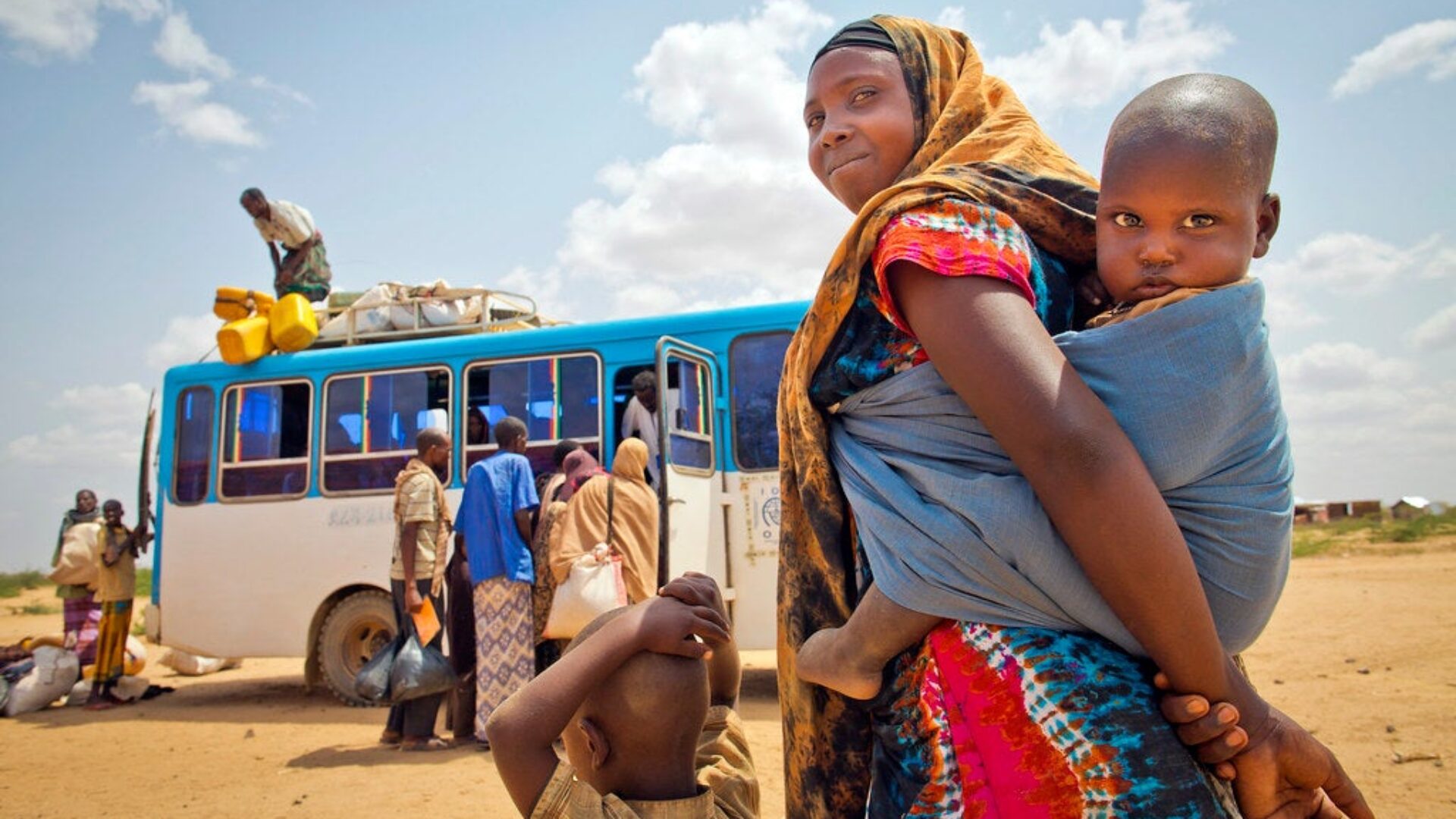Seeing Refugee Women as Resources, Not as Victims

This article was originally published by PeaceLab on April 8, 2020.
Women who are refugees or internally displaced people have been largely excluded from the Women, Peace, and Security agenda. Germany’s new National Action Plan should focus on increasing their participation in peace processes and evaluate policies aimed at their protection both in Germany and abroad.
It’s been 20 years since the landmark UN Security Council Resolution 1325 was passed, affirming the role of women in peace and security. A lot of progress has been made in raising awareness, in carrying out studies, and in mobilizing women to participate more actively in processes that affect their lives. But when looking at the resolution’s implementation through a displacement lens, the results have been profoundly disappointing. The number of refugees and especially internally displaced persons (IDPs), including women, has skyrocketed since this resolution was passed. While the number of refugees in the world doubled between 2000 and 2018, the number of IDPs increased from around 5 million in 2000 to over 40 million today.
In the process of developing its new National Action Plan for implementing Resolution 1325 on Women, Peace, and Security, the German government should include substantive recommendations on incorporating refugee and displaced women. The six thematic focal points in the current National Action Plan are all good, as they range from crisis prevention to participation, protection, and the inclusion of a gender perspective to fighting impunity. Gender-sensitive policies are needed across the board – from addressing victims of sexual violence, to developing training programs for staff, to involving women in crisis prevention efforts. Certainly, work is needed in all of these areas. But it’s also high time for policymakers to explicitly incorporate refugee and displaced women into their plans.
Here are four ways to do it.
1. Press for the Active Participation of Refugee and Displaced Women in Peace Processes.
Preventing, resolving, and recovering from conflicts are of paramount importance to refugee and displaced women. It is conflict, after all, that forces people to leave their communities and any progress in strengthening peace processes immediately benefits refugee and displaced women. While women are rarely present in peace negotiations, refugees and IDPs (both men and women) have also largely been excluded from such processes. Thus, refugee and displaced women face dual barriers to participation: As women and as refugees or internally displaced persons, they are largely left out of peace negotiations in most conflict situations. But it doesn’t have to be this way. The three years of negotiations between the Fuerzas Armadas Revolucionarias de Comlombia (FARC) and the Colombian government are a case in point; the participation of ‘victims’, defined to include internally displaced persons, was intentional, gender-sensitive, broad-based, and effective. In the case of Colombia, including those most impacted by conflict in the negotiations was key not only to ensuring that gender issues were addressed but that local communities supported the agreement. This is just common sense for both the short- and long-term. Not only do women make up around half of the population, but they are also often leaders in their communities, even if they are rarely in visible leadership positions, and pass on norms, attitudes, and culture to their children.
2. Spend Some Effort to Evaluate the Impact of the Plethora of Guidelines and Policies on Refugee and Displaced Women.
National governments and international agencies have made impressive strides in coming up with policies to incorporate gender in humanitarian aid to refugees and IDPs. But it’s easier to come up with nicely-written strategies and policies than to assess whether these policies are making an impact on the lives of women. For example, the IASC Guidelines on Gender-Based Violence make up a comprehensive, well-written, field-tested, and brilliant document. But gender-based violence in refugee and IDP settings continues at scandalously high rates. If we know what needs to be done, why aren’t we seeing better results? Is it because the guidelines are ignored or not implemented? Because there’s not enough money (though this would be the easy fix)? Because they’re actively opposed by insurgent forces or because there’s inadequate policing and security in the places where refugees and IDPs live? The new German National Action Plan should prioritize understanding the real life, on-the-ground barriers to effective action to improving the lives of refugee and displaced women. Obviously, this can only be done by engaging affected women in the process. For example, the Action Plan could set up a participatory evaluation process, led by affected women, to not only come up with ways to reduce gender-based violence but also to implement these recommendations – whether deploying more women police or pressing charges in courts or creating a refugee-led system to escort women and girls to toilets at night.
3. See Women as Resources, Not Just as Victims.
Refugee and displaced women are often at greater risk of sexual violence or unemployment than their male counterparts, but they shouldn’t automatically be considered as vulnerable. And sometimes others – such as adolescent males in Syria – are at greater risk than women. Refugee women are strong. They are survivors and have much to contribute to the communities they live in, if they are given the opportunity to do so. We need to shift our mindset from seeing refugee women as victims to seeing women as resources for their families and broader communities.We need to develop ways to use women’s resources, for instance by supporting refugee and displaced women’s organizations and encouraging them to design and implement programs on their own. For example, funding programs could prioritize either locally-based refugee and displaced women’s organizations or NGO programs that work with such organizations.
4. Look at Refugee and Displaced Women ‘Over There’ – but Also in Germany.
Germany has received large numbers of refugees in recent years and both governments and civil society groups have taken bold steps to welcome and integrate them into German society. About a third of the refugees are women, but do policies toward refugees and asylum-seekers take into consideration the particular strengths and challenges of refugee women in Germany? We know from other countries (including the US), that women refugees often have a harder time integrating into their new societies than men. They tend to be more isolated and have less opportunities to interact with their host communities and learn the language. They tend to be employed less and paid less than refugee men. In fact, a recent study suggests that if the employment and pay gap for refugee women were closed in the top 30 refugee-hosting countries, global GDP would increase by between USD 5 billion and as much as USD 1.5 trillion. All of these are reasons for the German government to address the situation of refugee women in Germany when writing its new National Action Plan.
Resolution 1325 was a watershed moment for the international community and continues to inspire women around the world. Given the growing number of refugees and IDPs in the world and the increasingly protracted nature of displacement, much more attention needs to be given to strengthening the inclusion of refugee and displaced women in the quest for peace and security.
Elizabeth Ferris is a Research Professor with the Institute for the Study of International Migration at Georgetown University. @Beth_Ferris.
Explore More

End of Year Reflections
This year has been particularly challenging for peace around the world, with…

“No Amnesty, No Silence:” Ukrainian Women Urge Accountability for War-Time Sexual Violence
Last week, the Georgetown Institute for Women, Peace and Security (GIWPS) brought…
